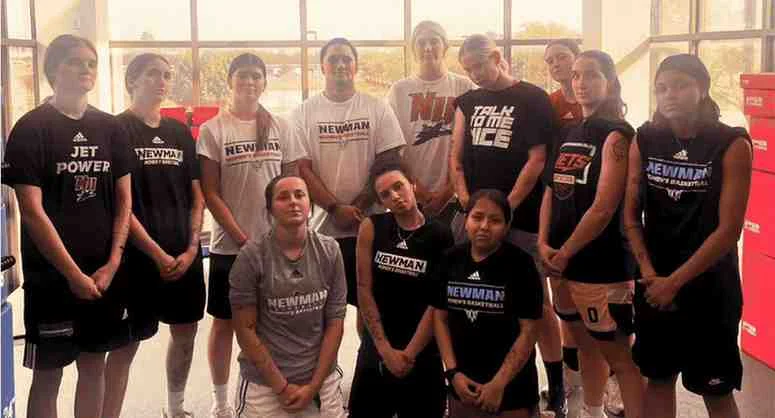
Coaches of distance runners should be asking an overarching question, one that is often not mentioned because it seems way too obvious: How does an athlete get better at running? Most leading researchers, physiologists, and coaches will point out various things that coaches need to convey to their runners. But I like to narrow it down to basic, easily remembered concepts that can be expanded on in an equally simple manner:
- How to use oxygen more efficiently
- How to improve lactate threshold
- How to enhance running economy
A bigger and stronger heart that pumps more blood to the muscles makes sense. So does having strong respiratory muscles that can move great amounts of air in and out of the lungs more efficiently. To emphasize this point, early in my coaching career, I had a wrestler who was running cross country to “get in shape.” After admiring a competitor who appeared to glide through three miles to win a big race, the wrestler observed “that kid has balloons for lungs.” Another essential component is the ability to efficiently extract oxygen from the blood by way of muscle cells. Knowing this, coaches can select at least one of these qualities to target in training.
In all of this, there is one component—by way of Owen Anderson’s most recent book, Running Form: How to Run Faster and Prevent Injury—that appears to address what I consider the “elephant in the room” that most coaches probably are aware of but are not sure how to deal with: running economy.
Running Economy
Running economy is the amount of oxygen we use at a given running speed. We can easily make the case that an efficient runner will probably use less oxygen. The reality is that genetics likely has something to do with this, but the amount of oxygen a runner can use effectively without any waste can be influenced by what I refer to as a few key economy indicators.
First, we need to consider what Dr. Jordan Metzl highlights as key economy indicators:
- The way in which a runner pushes off the ground (vertical oscillation)
- Arm swing
- Stride length
- Ground contact time
- Stability
- Number of mitochondria in the muscle cells
- Strength and efficiency of the cardiovascular and respiratory systems
- Efficiency of metabolism
- Neuromuscular coordination
Some of these points fall under what most coaches would call biomechanics. And these same coaches would agree that good running form is economical with no wasted motion. Okay, that sounds great, but what can we do about it? How many coaches are struck when noting that some runners look inefficient but run very fast?
When this happens, we start to consider (probably with good reason) that the way a particular runner looks might be due simply to the way they need to translate the skills of running based on their structural asymmetries and abnormalities that we don’t even know exist. It’s a fair point for coaches to keep in mind: style may indeed be the way runners translate the skill of the sport.
Kaleidoscopic Coaching
At my clinic sessions, I now talk about our need to engage in “kaleidoscopic coaching” for those of us working with distance runners. Meaning, we all know that inside our personal kaleidoscope there are all kinds of shapes and patterns that we call coaching strategies, workout concepts, and enhancement drills.
Rather than fixating on maintaining and considering only one specific pattern, sometimes we need to “turn the tube” so the same pieces emerge in different ways. We might not choose to change what we do, and that’s fine. But at least we can come to accept that other patterns do exist, and sometimes looking closely at the new arrangements can enhance the way we coach our athletes.
I contend that sometimes we need to entertain the possibility that the elephant in the room for distance runners may not really be an elephant but a completely different animal that we don’t fully see because we haven’t “turned the tube” on our kaleidoscope. How a runner looks while running is often due to the traditional way we view mechanics, and that’s precisely why “turning the tube” is so important—we see all the same parts in a somewhat different way.
What Are Good Mechanics?
The classic example of one-way vision is how coaches have long approached the apparent mechanical flaws of Emil Zatopek, the great “Czech Locomotive.” But was Zatopek a mechanically-flawed runner who simply learned how to translate the skill of running despite the shortcomings in his form? Zatopek’s incredible success in distance running should lead us to consider that mechanics is not simply style of form and that perhaps we’re overlooking the idea that the mechanics we consider essential are not even the right ones—and in fact may be an entirely different animal.
As Owen Anderson suggests, “shouldn’t a definition of proper form go beyond smooth activity and control of the torso? Should it also include precise mention of how the feet, ankles, and legs are functioning with actual scientific numbers placed on joint and leg angles, limb positions and movements, and foot angles at initial contact with the ground?”
If forward propulsion comes from what the legs are doing, shouldn’t we focus on lower limb actions? asks @Zoom1Ken Share on XMost coaches will say it’s difficult to do such a complicated analysis outside a locomotion lab, but perhaps we’re missing the whole point. If forward propulsion really results from what the legs are doing and not what the upper movements appear to reveal, shouldn’t we focus on the lower limb actions?
And this is what I believe Owen Anderson attempts to explain in his book.
Midfoot Landing
So what are the characteristics of the mechanics animal we need to identify? Here is what more and more researchers and biomechanists appear to agree on: a midfoot landing underneath the runner.
What do we need to identify? The midfoot landing underneath the runner, says @Zoom1Ken. Share on XWhy? First, this landing will reduce stress, and mechanical stress can lead to injury. Second, a midfoot strike makes for a shorter ground contact time. When a runner’s heel strikes, their foot hits the ground in front of their center of mass. We observe that the leg is straighter, and this straight leg results in a braking action. The foot landing so far forward from the runner forces them to pull their body forward instead of pushing off the ground.
The bottom line: Zatopek, most known for winning gold medals in the 5K, 10K, and Marathon in the 1952 Olympics, won because, as Anderson points out, “his legs and feet interacted with the ground in very positive ways, but this has never been mentioned in the examination of his form.”
To deal with this elephant in the room, we should first verify that it is indeed an elephant before we consider correcting its trunk position.
References
Anderson, Owen. Running Form: How to Run Faster and Prevent Injury. Human Kinetics, 2018.
Metzl, Jordan D., and Claire Kowalchik. Running Strong: The Sports Doctor’s Complete Guide to Staying Healthy and Injury-Free for Life. Rodale, 2015.





